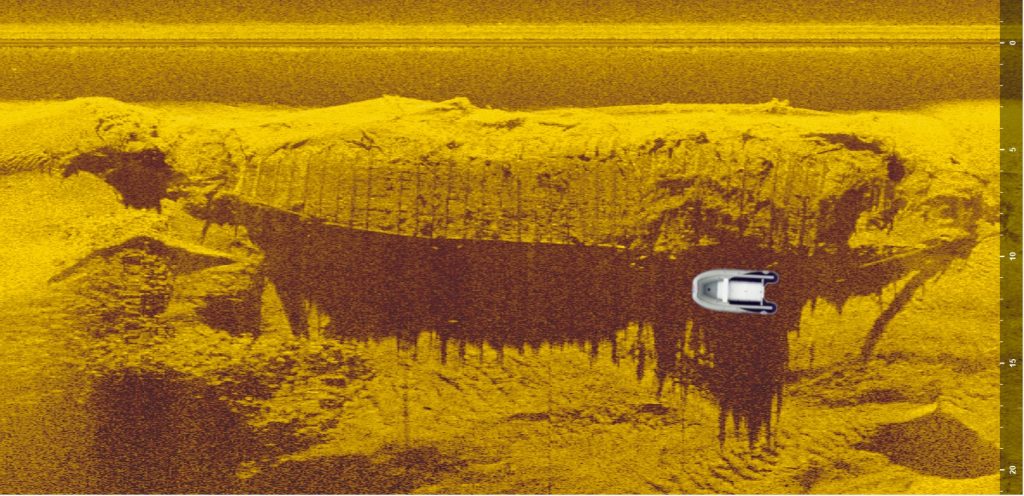A transport ship was discovered in the Vistula

The wreck of a large transport ship several hundred years ago was discovered by archaeologists in the Vistula River at the height of Łomianki Dolne, north of Warsaw. According to the finders, it is probably a shipwreck, i.e. a vessel that could transport up to 100 tons of goods.
The scientists conducted research on the bottom of the Vistula River over a dozen or so kilometres – from the Żerań Canal in Warsaw to Jabłonna.
Among the newly discovered wrecks was a well-preserved, large wooden transport vessel. “It is most probably a boat, a type of transport ship that was used from the 14th to 18th century”. – believes the head of the project, underwater archaeologist Artur Brzóska from the Association of Tomorrow’s Archaeologists. The wreck is 37 m long and 6 m wide.
The research of the Vistula is hindered by the lack of transparency of the water. “When we dive, we see a maximum distance of 10-20 cm. The search is not facilitated by the rapid river current.” – Brzóska stresses. Therefore, the researchers did not manage to find any items related to the ship – for example, goods that it was carrying. “Anyway, I don’t think we can count on much. In my opinion, the boatman was most probably transporting grain to Gdańsk. Such goods had no right to survive.” – emphasizes the head of the project.
Scottish wrecks are a very rare find. The best-preserved unit of this type in Poland was excavated in 2018 in Czersk, from where it was fully preserved in Rybno in the Warehouse and Storage Centre of the State Archaeological Museum in Warsaw.
The second unknown wreck during the latest research in the area of Warsaw was traced at the height of Buraków. Brzóska believes that it is most probably a ferry from the late nineteenth or early twentieth century. The evidence of this is to be found on the side of the units – probably on ropes.
Until now, only two wrecks were known in this section of the river – one from the 16th century. (due to the state of preservation it is difficult to determine the type of unit) and the second one from the 19th century. This is the so-called berlinka, i.e. an oblong barge for swimming on canals and rivers. “We’re glad we doubled that score.” – there’s no hiding the satisfaction of an archaeologist.
Researchers also came across the remains of the bridge from the World War II. They are located at the height of Łomianki Dolne. It is a five stakes staked into the bottom of the river. Remnants of the steel structure have also been preserved. “Our analyses and historical information show that the bridge was built by German sappers,” says Brzóska.
The research used sonar mounted on a motorboat. Only after selecting promising sites did the scientists dive to verify the findings. Even before undertaking the proper research, they tested the sonar on the Vistula near Warsaw’s Old Town.
During these experiments, they also managed to trace a fragment of the ship hitting the bottom of the river. In Brzóski’s opinion, it may also be a scotch, as evidenced by the fragment of this vessel pulled to the surface. It is a wooden frame (bottom) weighing about 250 kg, which is an element of the skeleton from the bow or stern of the ship.
The scientist stresses that the research was very time consuming. In total, throughout 2019, archaeologists sailed about 400 kilometres in parallel stripes by motorboat – all in order to explore 13 kilometres of a river of almost 500 hectares.
Now the scientists would like to take samples for research from the ships they found, so that the age of the sunken ships could be precisely determined. The project was financed by the Ministry of Culture and Scientific Heritage with the substantive support of the Institute of Archaeology at Warsaw University.
Szymon Zdziebłowski
